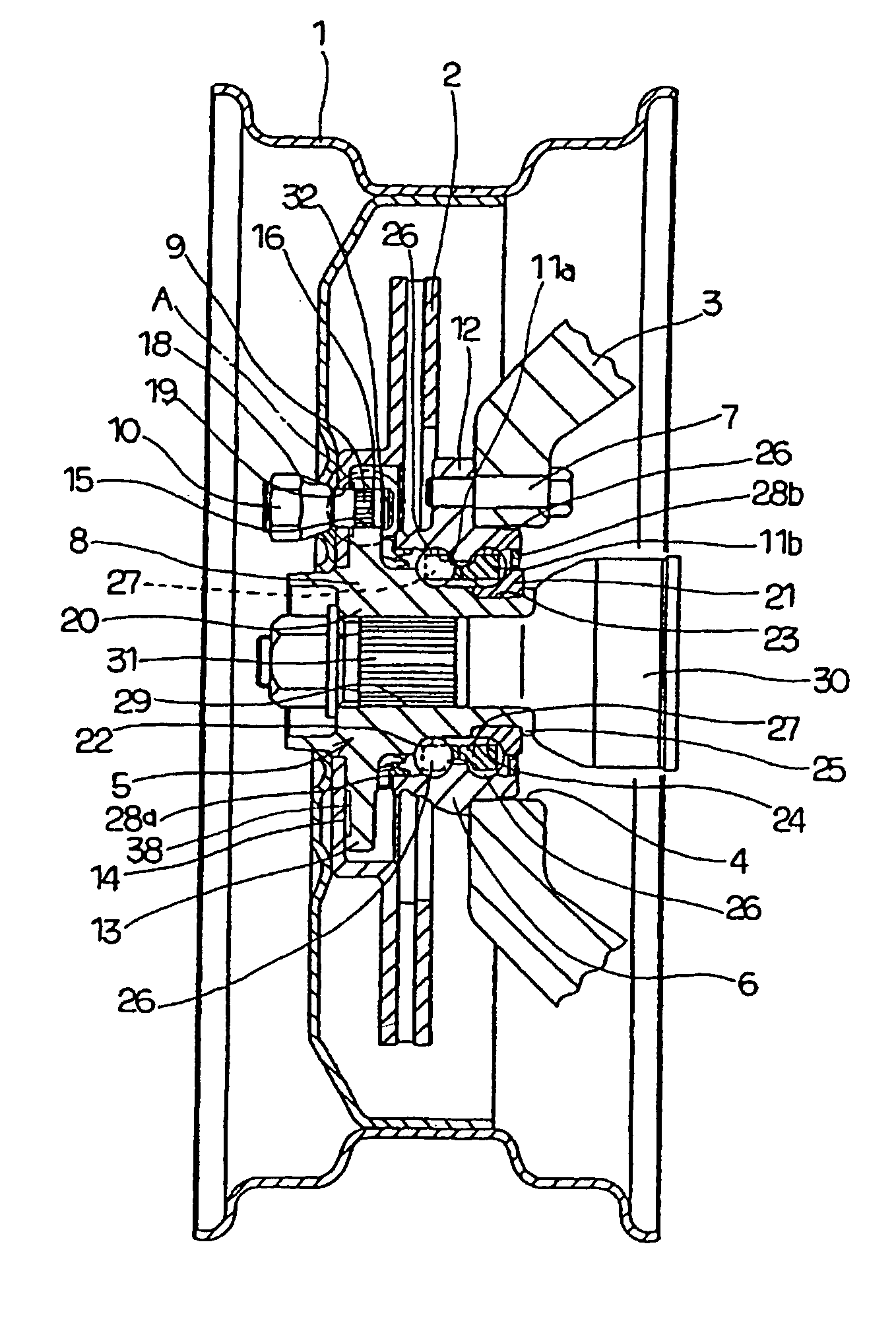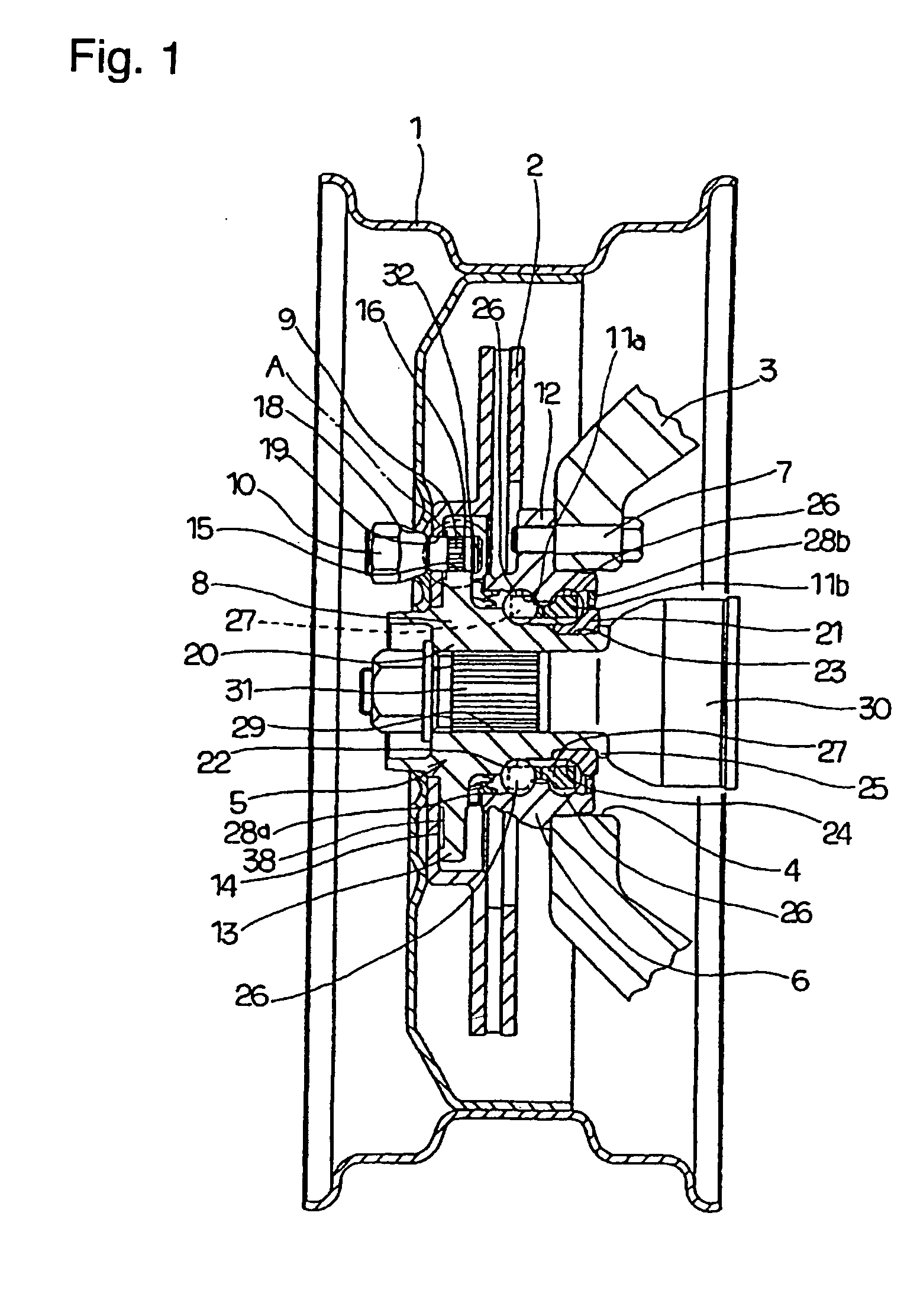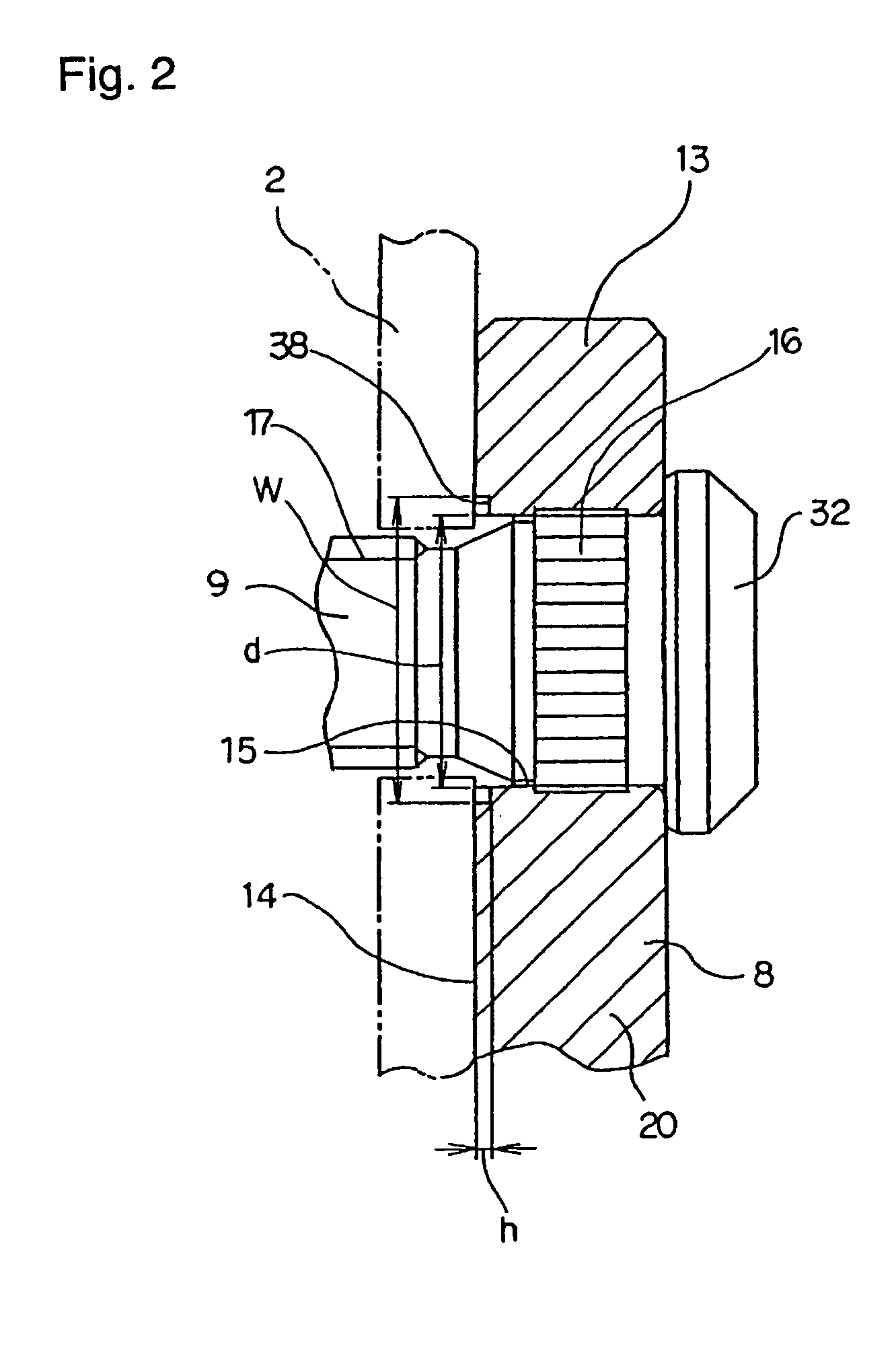Bearing unit for wheels
a technology for bearing units and wheels, applied in mechanical actuated clutches, braking discs, transportation and packaging, etc., can solve the problems of difficult to obtain a perfect right angle, judder and small runout of the side surface of the rotor in the direction of the rotation axis, so as to prevent deformation of the installation surface, inhibit the runout of the friction surface, and inhibit the effect of judder during braking
- Summary
- Abstract
- Description
- Claims
- Application Information
AI Technical Summary
Benefits of technology
Problems solved by technology
Method used
Image
Examples
Embodiment Construction
[0033] FIGS. 1 to 3 show a first example of the embodiment of the present invention. The feature of the present invention is sufficiently securing the surface precision of the installation surface 14, which is one side surface of the installation flange 13 that is formed on the outer peripheral surface of the hub 8 as a rotating member, so as to inhibit the runout of the rotor 2, which is a rotating member for braking. The other basic structures and functions of bearing unit for wheel 5 are the same as those explained above for the prior art with reference to FIG. 1, so any redundant explanation will be omitted or simplified, and the following description is focused on the feature of the present invention.
[0034] The outer peripheral surface of the hub body 20 of the hub 8 is provided with the installation flange 13 for fixing the wheel 1 of a traveling wheel and the rotor 2 as a rotating member for braking. The installation holes 15 are formed at a plurality of positions (5 in the ...
PUM
 Login to View More
Login to View More Abstract
Description
Claims
Application Information
 Login to View More
Login to View More - R&D
- Intellectual Property
- Life Sciences
- Materials
- Tech Scout
- Unparalleled Data Quality
- Higher Quality Content
- 60% Fewer Hallucinations
Browse by: Latest US Patents, China's latest patents, Technical Efficacy Thesaurus, Application Domain, Technology Topic, Popular Technical Reports.
© 2025 PatSnap. All rights reserved.Legal|Privacy policy|Modern Slavery Act Transparency Statement|Sitemap|About US| Contact US: help@patsnap.com



